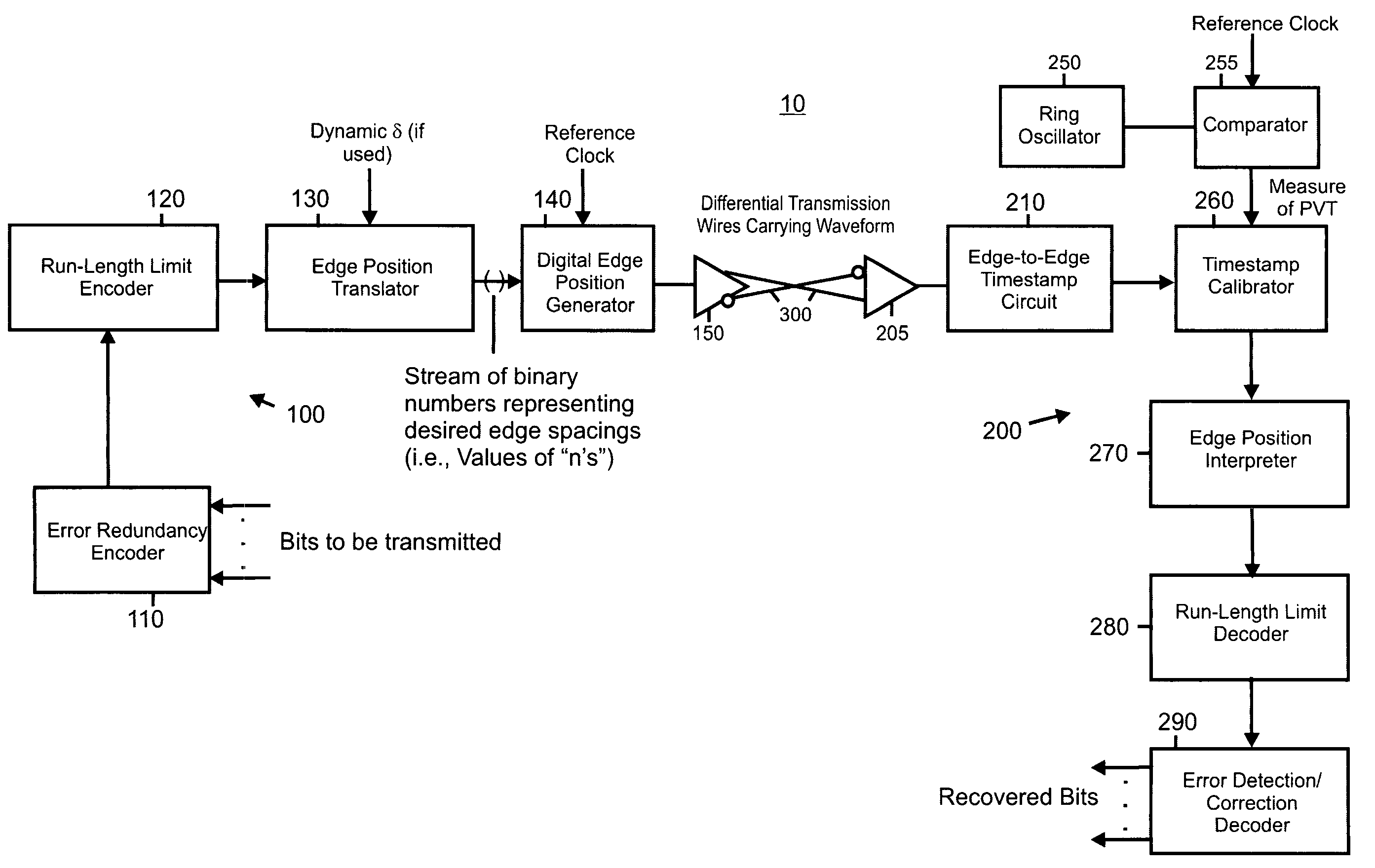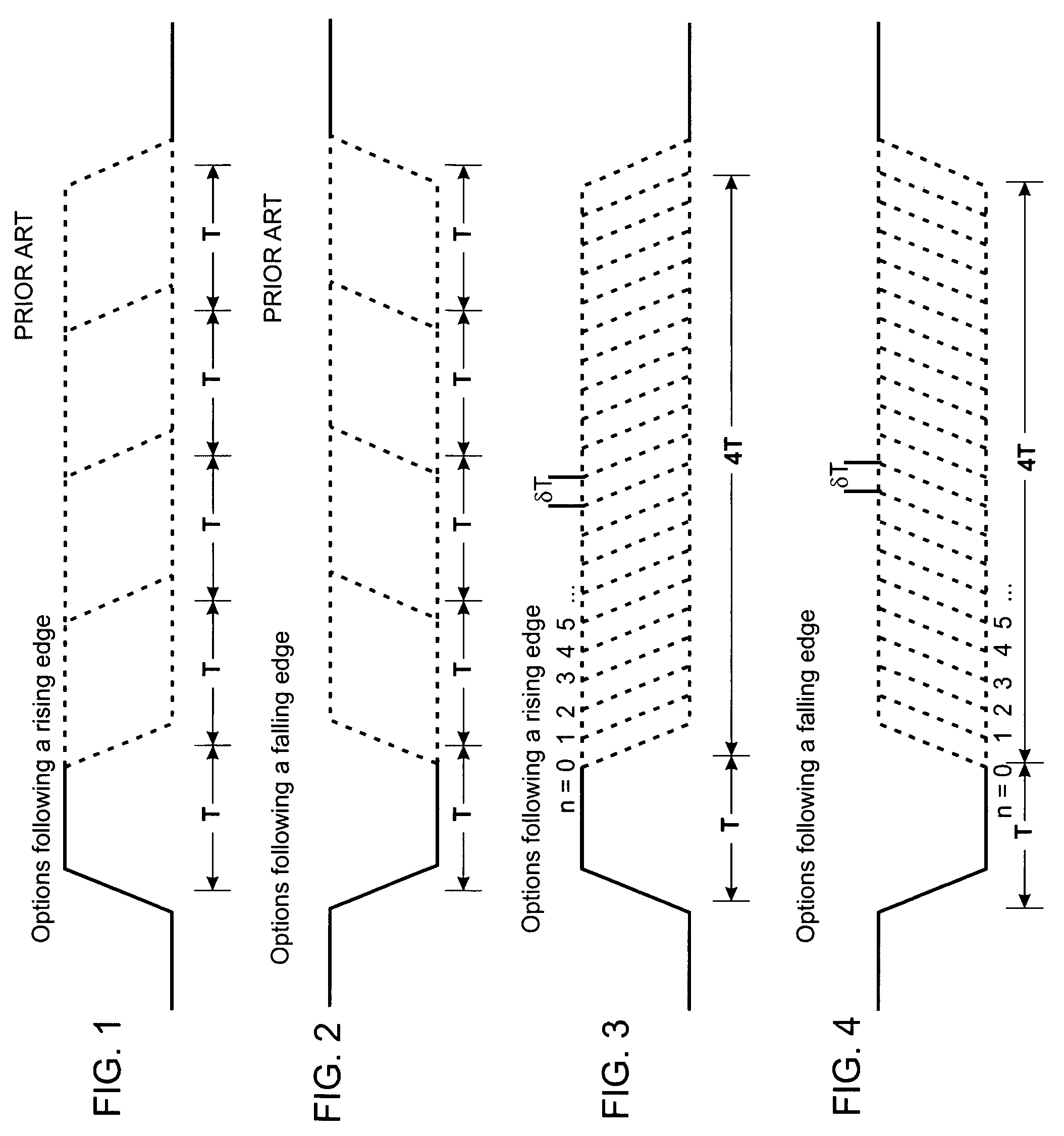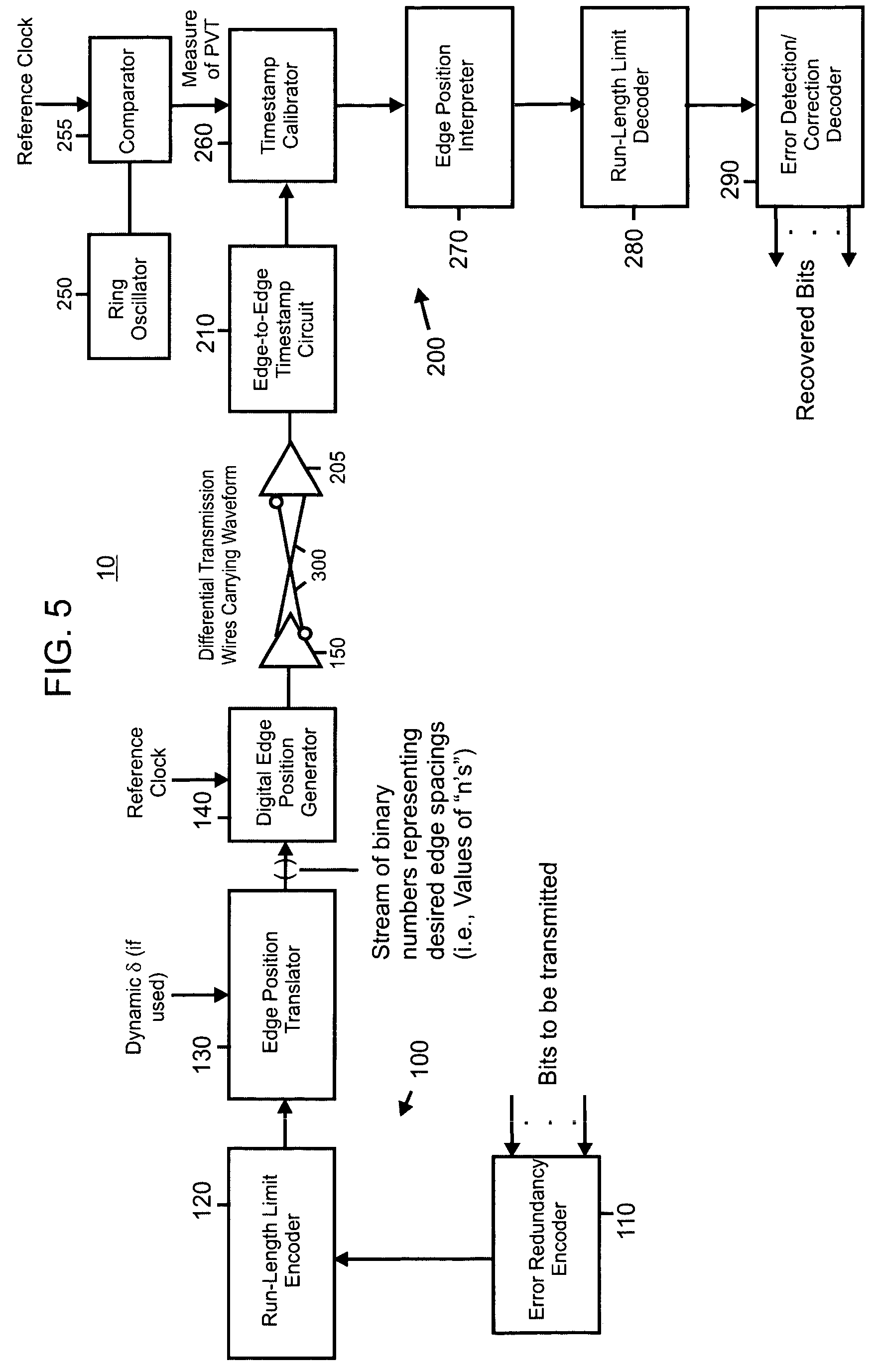High speed serializer-deserializer
a serializer and high-speed technology, applied in the direction of code conversion, pulse conversion, electrical apparatus, etc., can solve the problems of code extracting an overhead in reducing data throughput and reducing data throughput, and achieve the effect of less expensive implementation
- Summary
- Abstract
- Description
- Claims
- Application Information
AI Technical Summary
Benefits of technology
Problems solved by technology
Method used
Image
Examples
Embodiment Construction
Underlying Theory
[0015]Assume each transition or edge in a binary (meaning bi-valued) waveform is followed by another of the opposite polarity that is later in time by:
Δt=T(1+nδ) (1)
where: T is the minimum allowed spacing between edges that may occur at multiple intermediary positions between T and kT, where k is a real number greater than 1, δ is the granularity of edges for the enhanced SerDes techniques described herein, and n is an edge index and is an integer from 0 to some maximum. In some applications, it may be desired to make k an integer greater than or equal to 2 for design simplification, but it is not a requirement. That is, the largest inter-edge spacing need not be a multiple of the smallest inter-edge spacing. When δ=1, conventional SerDes is practiced.
[0016]If the probability of each possible edge or transition n is selected so that Shannon information per unit time is equal among all n, then the data rate of the channel, R (in bits per T) of the enhanced SerDes te...
PUM
 Login to View More
Login to View More Abstract
Description
Claims
Application Information
 Login to View More
Login to View More - R&D
- Intellectual Property
- Life Sciences
- Materials
- Tech Scout
- Unparalleled Data Quality
- Higher Quality Content
- 60% Fewer Hallucinations
Browse by: Latest US Patents, China's latest patents, Technical Efficacy Thesaurus, Application Domain, Technology Topic, Popular Technical Reports.
© 2025 PatSnap. All rights reserved.Legal|Privacy policy|Modern Slavery Act Transparency Statement|Sitemap|About US| Contact US: help@patsnap.com



